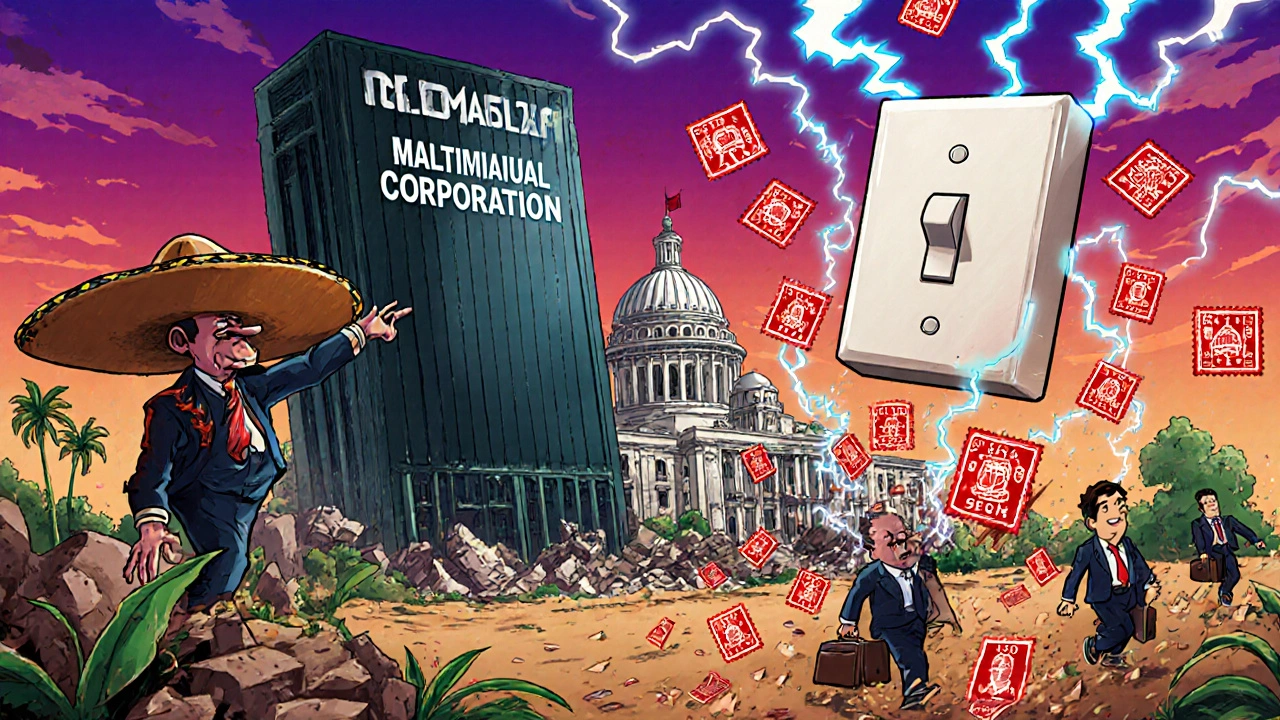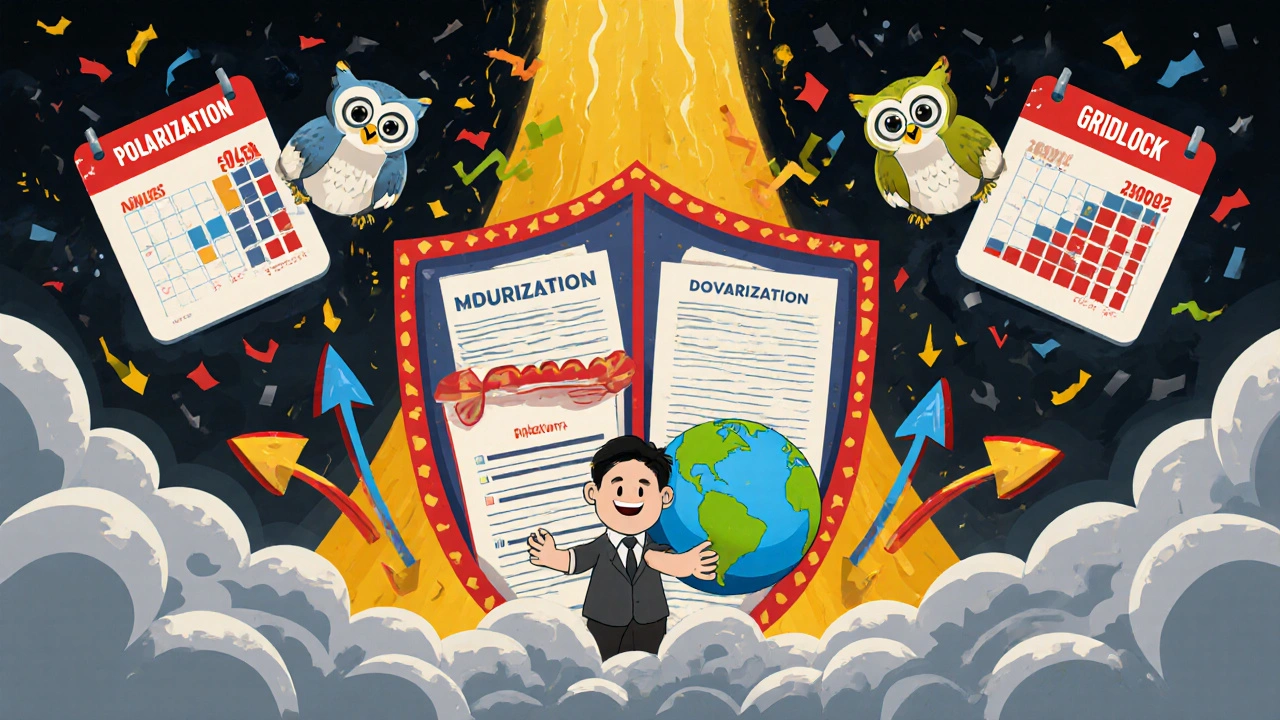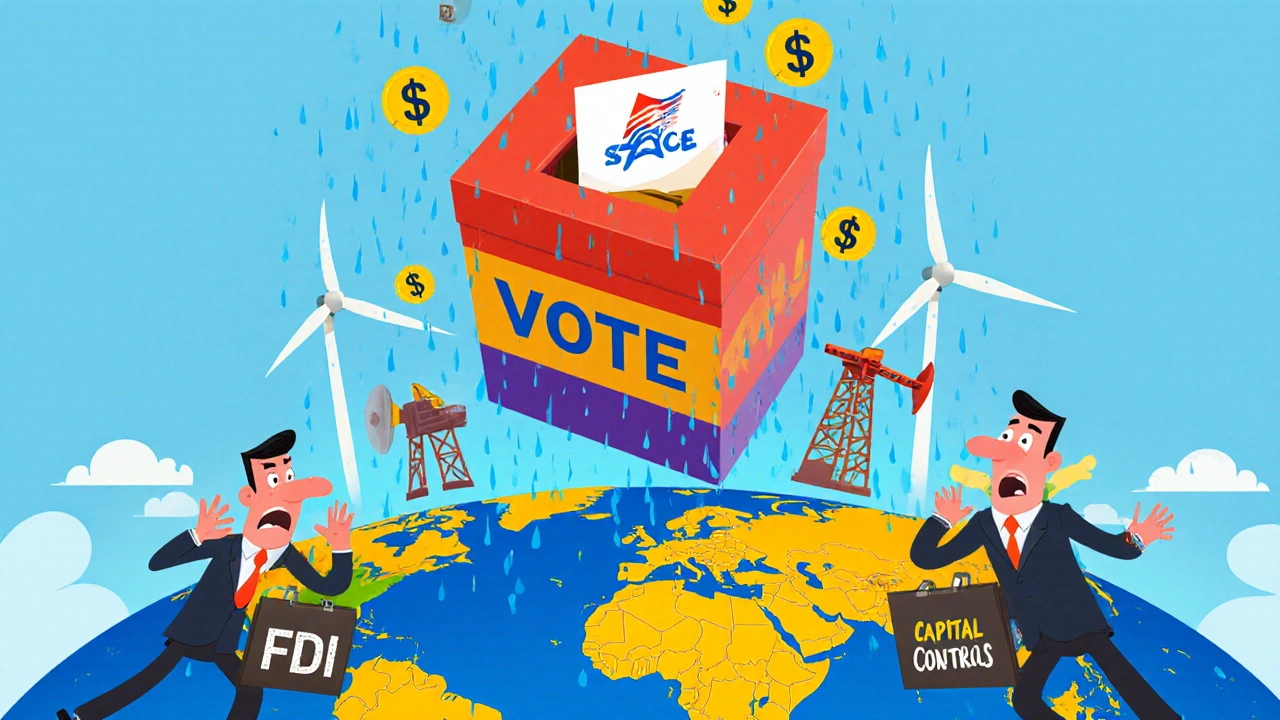Election Risk Exposure Calculator
Calculate your portfolio's exposure to political regime risk during elections. Based on data from 70+ countries with upcoming elections (2024-2025).
Risk Level:
estimated risk increase during election period.
Recommended Actions:
- Monitor election calendars - Track key dates from the article
- Review political risk insurance - Check coverage for this exposure
- Consider diversification - Balance volatile markets with stable economies
When you invest outside your home country, you’re not just betting on a company or a market-you’re betting on a government. And governments change. Sometimes quietly. Sometimes violently. In 2024 and 2025, over 70 countries held or will hold national elections. Together, they represent 70% of global GDP. That means if you hold foreign stocks, bonds, or real estate, you’re exposed to a wave of political uncertainty unlike anything seen in decades.
What Political Regime Risk Really Means for Your Portfolio
Political regime risk isn’t about coups or revolutions-it’s about the quiet, systematic erosion of predictability. It’s when a new president suddenly cancels a mining permit you paid millions for. Or when a parliament votes to nationalize telecom companies after an election. Or when a central bank freezes foreign currency transfers because of political pressure. This isn’t theoretical. In 2023, Fitch Ratings downgraded the U.S. credit rating-not because of debt levels, but because of election integrity concerns. That’s the first time a major rating agency tied sovereign creditworthiness directly to political instability. It signaled a shift: political risk is now a financial risk, not just a geopolitical one. The impact shows up in hard numbers. Countries experiencing democratic backsliding see foreign direct investment (FDI) drop by 1.8% annually. In severe cases, that number jumps to 3.2%. In emerging markets like Kenya, Nigeria, and Nepal, pre-election security incidents spiked 14% to 23% above regional averages. Meanwhile, in the U.S., political uncertainty jumped 43% in the three months before the 2020 election, according to the Baker-Bloom-Davis index.How Elections Trigger Investment Risk
Elections don’t just change leaders-they change rules. And those rules dictate how much money you can make, move, or keep. Here’s how it works in practice:- Policy reversals: A pro-business government gets replaced by one that imposes windfall taxes on energy profits. In 2022, Argentina’s new president raised export taxes on soy and corn by 30% overnight-hitting foreign agribusinesses hard.
- Regulatory delays: After elections, ministries often freeze permits and approvals while staff are replaced. In India, foreign investors reported average delays of 11 months in environmental clearances after the 2019 election.
- Asset seizures: In 2021, Venezuela’s government seized control of a Canadian-owned gold mine under a new “national sovereignty” law. The company had no recourse.
- Capital controls: Turkey’s 2023 election led to currency controls that blocked foreign investors from repatriating profits for over 18 months.
Who’s Most at Risk-and Why
Not all investments face the same level of political risk. The danger depends on three things: where you invest, what you invest in, and how long you hold it. Emerging markets are the most vulnerable. Countries with weak institutions, low transparency, and high political polarization face the steepest drops in FDI after elections. International IDEA found that only 35% of election management bodies in low-income countries have dedicated risk units-compared to 89% in high-income ones. Infrastructure and energy projects are the most exposed. These require long-term contracts, massive upfront capital, and government approvals. A single policy shift can wipe out years of planning. Energy firms spend 2.1% of revenue on political risk management-nearly triple the 0.9% spent by tech firms. Small and mid-sized businesses are at the greatest disadvantage. Multinationals with over 10,000 employees spend 1.2% of their international budget on political risk tools. SMEs? Just 0.3%. Yet SMEs make up 70% of foreign direct investment in developing economies. That’s a dangerous mismatch.
How to Protect Your Investments
There’s no magic shield against political risk-but there are proven ways to reduce exposure. 1. Monitor election calendars Mark your calendar for every major election in your portfolio. In 2024-2025, key dates include Mexico (June), South Africa (May), Indonesia (February), and Brazil (October). The most volatile period? The 90 days before voting day. That’s when policy uncertainty spikes 40% compared to non-election years. 2. Use political risk insurance The global market for political risk insurance hit $12.7 billion in 2023. Policies cover expropriation, currency inconvertibility, and political violence. Allianz, Chubb, and Euler Hermes are the top providers. Premiums vary: 1.5%-3% of investment value for high-risk countries, under 0.8% for stable democracies. 3. Diversify by political system Don’t put all your foreign money in countries with similar governance. Mix stable democracies (Germany, Japan, Canada) with controlled economies (Vietnam, UAE) and emerging markets with strong institutions (India, Chile). This reduces systemic risk. 4. Demand transparency from companies Ask: Does the company you’re investing in have a political risk team? Do they run quarterly assessments? Do they disclose exposure to election-related policy changes? Harvard Law School found that only 28.7% of public companies believe they’re well-prepared for political risk. If they’re not, neither are you. 5. Avoid long-term contracts in volatile regions If you’re investing in a power plant or pipeline in a country with a history of election-driven policy flips, insist on renegotiation clauses. A 5-year contract with a 12-month review trigger is safer than a 20-year lock-in.What the Best Investors Are Doing Differently
The top performers don’t treat political risk as a footnote. They build it into their core strategy. Kroll’s 2024 report found that companies doing biannual political risk assessments had 18.7% higher operational continuity during election periods than those checking once a year. Why? Because they spotted policy shifts early-like when Poland’s new government signaled it would scrap EU-aligned tax incentives six months before the vote. Another key move: integrating political risk into enterprise-wide risk frameworks. Companies that do this see 22% higher shareholder returns during political transitions. That’s not luck-it’s discipline. Meanwhile, governments are catching up. The European Central Bank now requires banks with over €30 billion in assets to stress-test for political risk. That’s 137 institutions forced to model scenarios like “election of populist leader” or “sudden nationalization.”

Laura W
November 1, 2025 AT 01:54Bro, I just marked every single election on my calendar like it’s a damn Netflix release. Mexico in June? That’s my soybean bet right there. And don’t even get me started on Brazil in October-those policy swings are wilder than my ex’s Instagram stories. Political risk insurance? Non-negotiable. I’m paying 2.3% on my Nigerian oil play, but at least I’m not crying when they nationalize next year. This isn’t Wall Street-it’s Game of Thrones with balance sheets.
Graeme C
November 2, 2025 AT 22:37Let me be unequivocally clear: the notion that political risk is confined to ‘emerging markets’ is not merely incorrect-it is catastrophically naive. The U.S. credit downgrade by Fitch wasn’t a footnote; it was a seismic event in financial epistemology. Polarization has become a systemic risk factor, quantifiable and correlated with volatility indices. Furthermore, the 43% spike in U.S. political uncertainty pre-2020? That’s not anecdotal-it’s statistically significant, and it’s replicated across the OECD. If your portfolio lacks a political risk stress-test module, you are not an investor-you are a gambler with a Bloomberg terminal.
Kenny McMiller
November 3, 2025 AT 10:16Think about it-governments are just emergent properties of collective human behavior, right? So when you invest abroad, you’re not just betting on GDP or interest rates-you’re betting on the fragile, messy, irrational psyche of a nation. That’s why the 1.8% annual FDI drop in backsliding democracies? It’s not about policy-it’s about trust erosion. And trust? It’s the ultimate intangible asset. Companies spend millions on ESG reports but ignore the fact that a populist winning an election can vaporize trust faster than a crypto crash. We need to stop treating politics as an external shock and start seeing it as the operating system of capital.
Also, SMEs are getting crushed because they don’t have the bandwidth to hire a political risk analyst. That’s not a market failure-it’s a structural injustice. Maybe we need a ‘political risk ETF’ for small investors. Just sayin’.
Dave McPherson
November 4, 2025 AT 11:12Wow. Just… wow. You wrote a 2,000-word op-ed and called it ‘investment advice.’ Meanwhile, I’m over here buying lithium stocks in Chile because the president’s dog has better institutional credibility than your average U.S. senator. Look, if you’re still using ‘diversification’ like it’s a magic spell, you’re five years behind. The real play? Buy companies with lobbying teams bigger than their R&D departments. If your portfolio doesn’t have a ‘political risk czar’ on payroll, you’re not investing-you’re donating to chaos. And don’t even get me started on that ‘political risk insurance’ nonsense. It’s just a tax write-off for hedge funds who already have offshore shells. Real investors? They don’t hedge-they *predict*. And if you’re waiting for a 90-day pre-election spike to act? You’re already late.